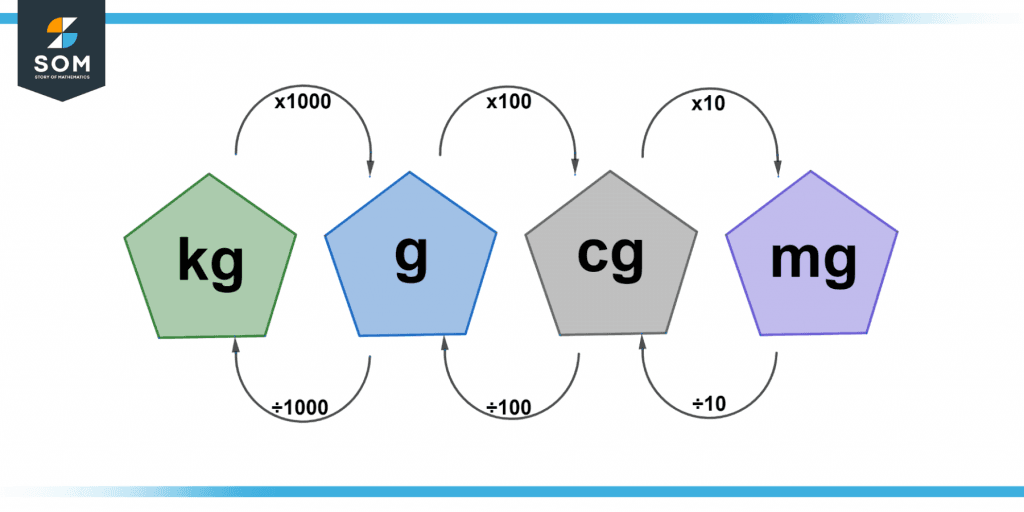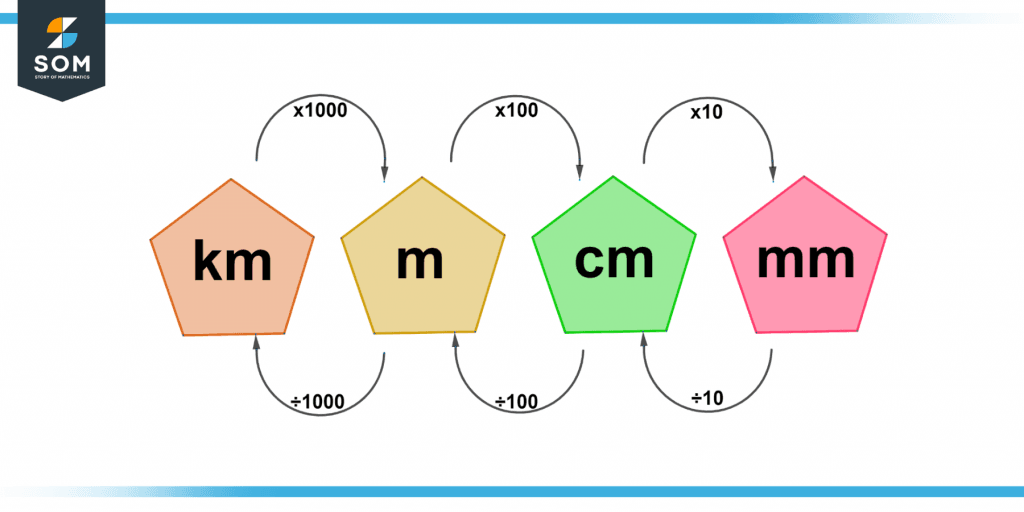JUMP TO TOPIC
Kilo|Definition & Meaning
Definition
Kilo is a decimal number prefix inside the metric system that denotes multiplication by 1000. The lowercase letter k in the International Units System represents it.
Figure 1 below shows the kilo.

Figure 1 – Representation of kilo.
Metric System
The metric measurement system is the standard method for measuring distance, height, and most other everyday goods. Consider a container of milk as an example. We measure the amount of milk in liters as well as the height of a jar in meters (or centimeters). This is because these metric units, known as SI units, are used in most countries worldwide (SI of Units).
Weight
A kilogram is the standard weight measuring unit. The beam balancing or weighing scale is the standard equipment for measuring weight. Here are some examples of where weight measures are commonly used:
- Two bread slices weigh around 100 grams.
- A loaf of wheat weighs roughly one kilogram (kg).
- An elephant weighs about 5 tonnes.
Kilogram
The kilogram is a mass measurement unit. The kilogram is a standard measure of mass and sees how it compares to other units such as grams, milligrams, pounds, ounces, and tonnes.
A kilogram is the standard unit of mass measurement established by the International Units of Measurement (SI). The symbol ‘kg’ represents it. It is the measurement unit for measuring an object’s mass and is the standardized unit of matter used around the globe.
Kilogram Conversion
Kilograms are the next higher unit of measurement after grams. It is employed to weigh medium to heavy things. A kilogram is a measure used to consider human weight, vegetables, and fruits. It is represented by the symbol ‘kg,’ where ‘k’ represents kilo, and ‘g’ stands for gram. There are numerous items of various weights and masses all around us.
In the meter system of measurement, there are several standard units for measuring the mass of any item.
Kilogram to Grams and Milligrams
- Gram: A gram is a mass unit defined by the international units system (SI). It equates to one-thousandth of the kilogram. It is represented by the symbol ‘g’ and is used to weigh light things such as a pen or a bar of chocolate. As a result, the kilogram-gram relationship is expressed as 1 kilogram (Kg) = 1000 grams (g).
- Milligram: Because 1 gram (g) equals 1000 milligrams (mg), the kilogram-milligram relationship is represented as 1 kilogram (kg) = 1000000 milligrams (mg).
Figure 2 below shows the conversion of a kilogram.

Figure 2 – Conversion of a kilogram.
Length
Length may be measured in several quantities, such as inches, centimeters, feet, kilometers, and so on. However, the metric units for measuring length are millimeters, centimeters, meters, and kilometers. A ruler or measuring tape with centimeter units can measure the distance in the metric system.
Kilometer
A kilometer is a length or distance measuring unit. It is a metric unit of measurement. The distance can be provided in miles as well as kilometers. Whereas miles & kilometers both indicate the same quantity, their values are not the same.
A kilometer is indeed a metric measurement unit used to indicate distance. The abbreviation for kilometer is km. It is a part of the SI units.
Kilometer lengths can indicate the distance between two cities, the length of the airport, or even the distance traveled while driving.
Kilometer Conversions
Wherever lengthy distances are measured, conversion is required. The kilometer definition states that km indicates distance as a SI unit.
A mile is a distance measurement unit used in the United States. The “U. S. Customary Units (USCS)” are the metric units used in the United States. Although kilometers and miles are used to measure the same measure (distance), their values differ.
Although the kilometer isn’t a unit of measurement in the American measuring units (USCS), it is widely used in research, medicine, or military forces.
Kilometer to Meters, Centimeters and Milimeters
- Meter: A meter is a SI measurement of distance. The abbreviation is m. 1 kilometer (km) = 1,000 meters is the relationship between kilometers and meters (m).
- Centimeters: As 1 meter (m) Equals 100 centimeters, the meter may also be given in centimeters (cm). As a result, the relationship between kilometers and centimeters is as follows: 1 kilometer (km) = 1000 100 = 1,00,000 centimeters (cm).
- Millimeters: Centimeters are represented as 1 centimeter (m) = 10 millimeters (mm). As a result, the relationship between kilometers and millimeters is as follows: 1 kilometer (km) = 1,00,000 10 = 1,000,000 millimeters (mm).
Figure 3 below shows the conversion of kilometers.

Figure 3 – Conversion of a kilometer.
Examples of Kilo
Some examples of kilos are listed below that would further clarify your concepts.
Example 1
Paul spotted a 600 cm long giant fish in an aquarium. Assist Paul in calculating its length in millimeters.
Solution
Centimeters and millimeters, written as cm & mm, respectively, are two units of length in the metric system. To convert centimeters to millimeters, increase the supplied amount by ten since one centimeter equals ten millimeters.
1 cm equals 10 mm.
600 cm equals 600 × 10 mm.
600 cm equals 6000 mm.
As a result, the fish measures 6000 mm in length.
Example 2
Ruth intends to go to a local hospital during her annual physical. She discovers a hospital 6 kilometers from her home. Ruth must travel how many kilometers to reach her goal.
Solution
We already know that 1 km Equals 0.62137 mi.
Ruth must go 6 kilometers to the hospital.
6 km Equals 6 0.62137 miles = 3.728 km
Ruth must thus walk 3.728 kilometers to reach their hospital.
Example 3
Anna jogged the same route every day for five days. She ran 5 kilometers in 5 days. How far did Anna run each day?
Solution
As we all know, 1 mile equals 1000 m.
As a result, 5 km Equals 5000 m.
She ran every day to get the number of meters, dividing 5000 m by 5.
$\dfrac{5000}{5}$ m = 1000 m
As a result, Anna ran 1000 meters every day.
All Images are made using GeoGebra.
